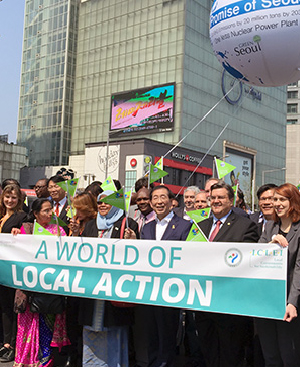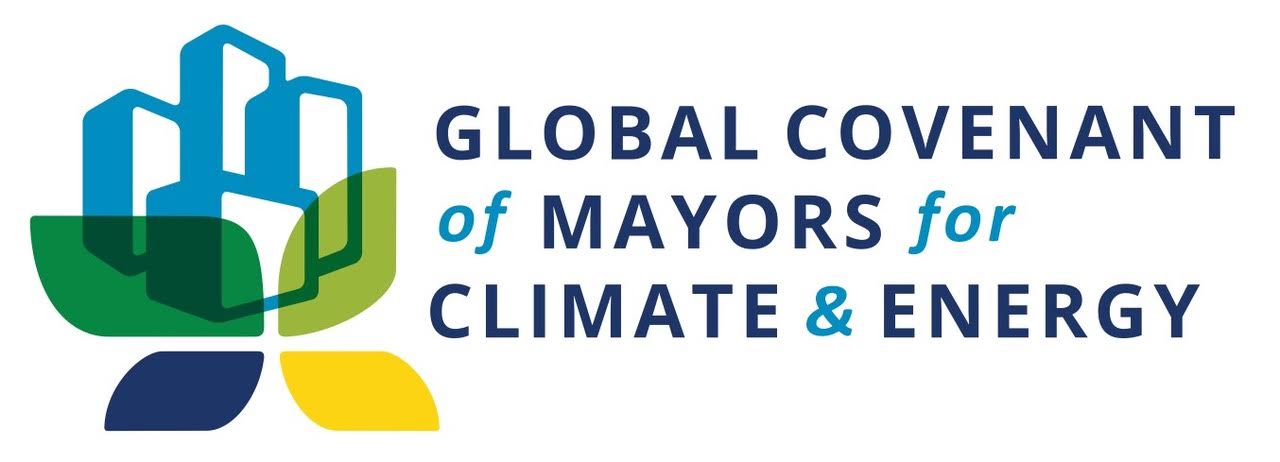- Home
- Reporting entities
- City of Cagayan de Oro
City of Cagayan de Oro
Philippines Mayor: Oscar Moreno-
Population 602088

-
Area 578.51km 2
-
GDP 490 BillionPHP
-
Targets by N/A N/Aemission
Targets by City of Cagayan de Oro
The City of Cagayan de Oro commits to advancing along the stages of the Compact with the goal of full compliance with all requirements within three (3) years, specifically: - That the greenhouse gas emissions inventory for our city be consistent with the Global Protocol for Community-Scale Greenhouse Gas Emission Inventories (GPC), within one (1) year or less - That the climate hazards and vulnerabilities faced by our city be mitigated within one (1) year or less - That we meet our target to reduce greenhous gas emissions within two (2) years or less - That our plans to address climate change mitigation and adaptation be realized within three (3) years or less.
- Start year:
- Type: Public Participation/Stakeholder engagement
- Status: In operation
The Bitan-ag Creek Challenge encourages every barangay to participate in the rehabilitation of Bitan-ag Creek, a major waterway in Cagayan de Oro City, by:
-Complying with related environmental laws; and
-Promoting participatory development through social mobilization in the barangay.
The Challenge calls upon participating barangays to design a program or project that promotes social mobilization and greater participation of local residents in solid waste management, creek management, and community-based education and advocacy.The Barangay with the winning proposal will be awarded a grant in the amount of PhP500,000.00 for implementation purposes.
- Residential
- Commercial
- Waste

- Start year:
- Type: Policy/Strategies/Action Plans
- Status: In operation
As a country, Philippines is part of a global commitment to build the resiliency of nations and communities to disasters and reducing vulnerabilities and risks to hazards by being one of the signatories, among 168 countries to the United Nations Hyogo Framework for Action held in Kobe, Japan in 2005. All member countries agreed that they commit to make Disaster Risk Reduction (DRR) a priority of the national and local government. With this, member countries should have strong institutional basis for implementation; identify, assess, and monitor disaster risks and early warning; use knowledge, innovation and education to build a culture of safety and resilience at all levels; and reduce underlying risks and factors and strengthen disaster preparedness for effective response among all levels.
The Republic Act 10121, known as the “Philippine Disaster Risk Reduction and Management Act of 2010" paves way for strengthening the government’s management and response to the emerging trends and impacts of climate change in the Philippines. The law outlines concrete measures to ensure that Climate Change Adaptation (CCA) and Disaster Risk Reduction (DRR) be integrated and mainstreamed in the policy formulations and developmental processes of every regional, provincial and local government unit.
Tropical Storm Sendong (international name ‘Washi’) that hit Cagayan de Oro city on December 16, 2011 left thousands of people dead and missing in Northern Mindanao, billions of properties, agriculture, fisheries and natural landscapes destroyed. This dramatically changed the mind-sets of the many Filipinos. The tangible experience had left us to think of ways and measures for us to be equipped and better prepared Kagay-anons before, during and after any human-induced and natural calamities. The institutionalization of CCA and DRR in Cagayan de Oro city is one historic measure of the local government. It amplifies paradigm shift that this is the ‘new normal’ as DENR puts it. And with the climate changes come acceptance and resilience of the citizenry.
The comprehensive Disaster Risk Assessment (DRA) study of Cagayan de Oro after the onslaught of TS Sendong presented hazard characterization, consequence analysis, risk estimation and evaluation. These four (4) major stages follow the methodology of the Housing and Land Regulatory Board (HLURB) in the mainstreaming of DRR and CCA framework provided by the Deutsche Gesellschaft fur Internationale Zeusammenarbeit (GIZ) with NEDA and UNDP. In hazard characterization, it was revealed that typhoons, rain induced floods, earthquakes, landslides, storm surge, coastal flooding and subsidence are common phenomenon or hazards that have occurred in the city these past few years. Through consequence analysis, it was explained how these dangerous conditions affects the environment and the people economically, socially, psychologically and mentally. Further, risk estimation revealed the potential hazards in identified barangays high risked to flooding and landslide, coastal barangays susceptible to storm/coastal surge, among others.
These hazards have extensively affected the existing lifeline facilities such as water, power, transportation, communication, infrastructure, housing, hospitals, agriculture and fisheries, and education. With the risk evaluation, the city planning core team with the technical assistance from Housing and Land Use Regulatory Board (HLURB) and Regional Development Council (RDC), Region X have prioritized measures to be implemented immediately by the local government. The immediate priority is to come up with a Disaster Reduction Management (DRRM) Plan to provide comprehensive direction for CCA and DRR strategic options and priorities.
Through the technical support of UNDP in its project, “Enabling Recovery and Resilience for TS Sendong-Affected Areas in Northern Mindanao”, the formulation of a comprehensive City Disaster Risk Reduction and Management plans has materialized. Members from the different offices of the city government converged for three days last December 11-13, 2012 to brainstorm on appropriate goals and activities of the four priority areas namely, Disaster Prevention and Mitigation, Disaster Preparedness, Disaster Response and Disaster Recovery and Rehabilitation. The plan outlines the activities of the four areas that will be executed by the government agencies and other stakeholders alike. To ensure the effectiveness and efficiency of the said plans, a collaborative, inclusive and proactive approach among the government, CSOs, private sectors, NGOs, INGOs, International Humanitarian Agencies, church, and academe are needed to reach the optimum goal of the National DRRM framework which is a “Safer, adaptive and disaster resilient Filipino communities towards sustainable development.” country. These concrete plans present short, medium and long-term goals that would hopefully set the direction for the City Disaster Risk Reduction and Management Council (CDRRM) of Cagayan de Oro. This document will be a living testimony that together, we can look forward and face the many climate change challenges ahead of us armed with the needed knowledge, skills and technology. Co-operation, synergy, and complementation of resources are keys for achieving sustainable development.
- Buildings
- Facilities
- Transport
- Agriculture, Forest and Other Land Use (AFOLU)
- Waste

- Start year:
- Type: Policy/Strategies/Action Plans
- Status: In operation
Section 37 of Republic Act No. 9003, otherwise known as the Ecological Solid Waste Management Act of 2000, provides that no open dumps shall be allowed three (3) years following the effectivity of the Act, and that the operation of controlled dumpsites shall no longer be allowed five (5) years following the effectivity of the Act. Therefore, all open and controlled dumpsites should have been phased out and closed as of February 2006.
Pursuant to the Act, the City Government of Cagayan de Oro submitted a Closure and Rehabilitation Plan, 2006-2010 for the City Dumpsite located in Upper Dagong, Barangay Carmen, in May 2010. An Authority to Close was then issued by the Environmental Management Bureau (EMB) of Region 10 on 2 June 2010, to institute the components of the closure and rehabilitation and post-closure land use of the dumpsite. The plan, however, was not implemented such that the existing controlled dumpsite threatens the livability and sanitation of the city.
This program aims to continue the closure and rehabilitation of the city dumpsite pursuant to Section 37 of RA 9003:
1) To protect public health, especially the residents and people of the city;
2) To address climate change-related incidents in the dumpsite; and
3) To pursue the establishment of the sanitary landfill as the final disposal site of the city.
- Waste

The City of Cagayan de Oro has reported 1 government operational inventory, since 2014. In its latest inventory, compiled in 2014, the Transport and Waste management are identified as key emission sources.
Mayor Oscar MorenoCity of Cagayan de Oro, Philippines


